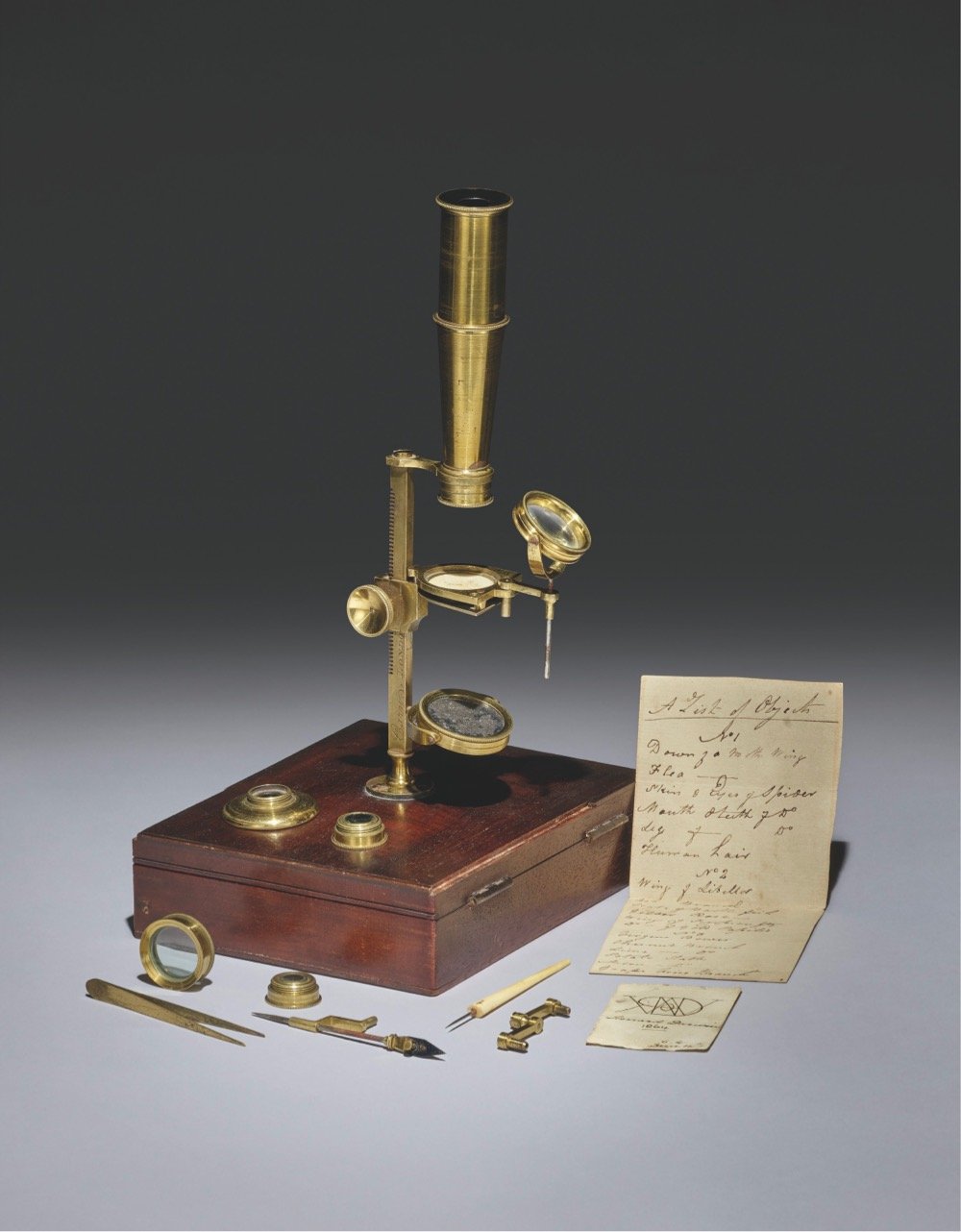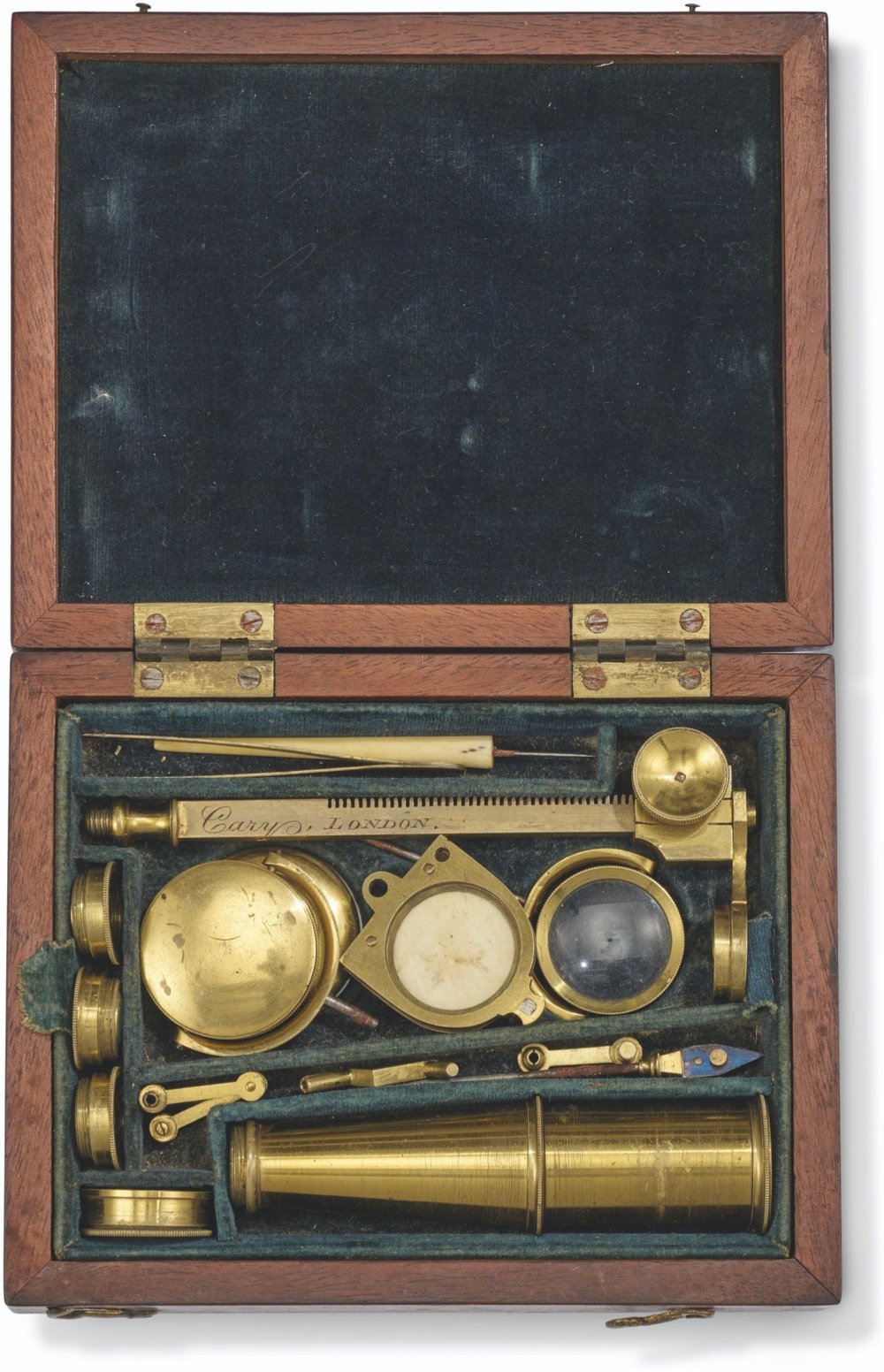Charles Darwin’s First Microscope
In the mid-1820s, the naturalist Charles Darwin began his research career studying botany in university and he bought a portable brass microscope to aid him in his studies. The microscope was passed down through the generations of his family and was recently sold at auction for ~$790,000.
Charles Darwin’s own research career began in earnest with the more prosaic, but no less philosophical, investigation into the sea creatures being dredged up from the Firth of Forth, which Charles obtained from friendly fishermen while he was trying to avoid his medical studies at the University of Edinburgh. Darwin’s studies of these strange ‘zoophytes’, which made liberal use of the microscope, began in 1826 and reached a successful conclusion in the spring of 1827, when he presented his very first scientific paper to the University’s Plinian Society.
These dates coincide with the first appearance of the present model on the market: the instrument was designed by Charles Gould for the firm Cary around 1825, and was certainly on sale by 1826, when its accompanying booklet was mentioned in the Mechanics’ Register. Of the five other surviving microscopes associated with Charles Darwin, four are known to have been acquired later (two in 1831, one each in 1847 and c.1848), and the other cannot be used for studying marine invertebrates.


(thx, mick)





Stay Connected